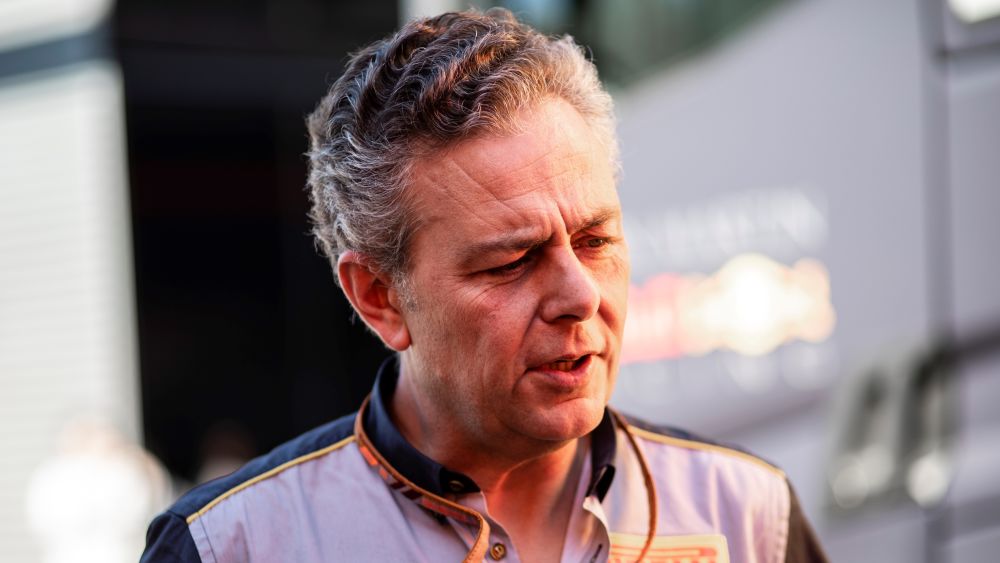Interview
‘I’m not expecting a surprise’ – Isola confident redesigned compounds will deliver what is expected of them

The Formula 2 car may have remained the same in 2021, but those in charge certainly weren’t sitting still, with redesigned hard and medium compounds on the list of priorities ahead of the new season, one year on from the switch to 18-inch tyres.
Utilizing vital data gathered from the 18-inch’s debut season, a number of key changes were identified, with Pirelli boss Mario Isola explaining that they discovered the need for a hard tyre that gave them “higher mileage, with more resistance to graining.”
Changes to the medium were then made as a result in order to ensure the compound remained in the “right place in terms of delta lap time.”
Speaking ahead of Round 2 in Monaco, Isola said he was pleased with the racing debut of the revamped hard compound in Sakhir, but he was reserving full judgement until they had more evidence.
“It was important to have a delta lap time that was visible,” Isola explained. “We didn’t want the two compounds to be too close. Graining resistance was better in Bahrain, and generally, we saw an improvement and that is exactly what we were looking for.

“Bahrain is a particular circuit because it requires a lot of traction. The asphalt is the most abrasive of all the circuits that we use, and I am talking about all 23 circuits that we use in F1, not just the ones in Formula 2 and Formula 3. It’s very abrasive with a high temperature, especially in Formula 2 because the races are in the day, not during the late afternoon or the evening, which would come with a lower temperature.
“In Bahrain, we’re talking about temperatures in excess of 50 degrees on track, which is not common in the European season. We have some circuits where we reach this kind of temperature, but as an average, we’re talking about 35 / 40 degrees, not in excess of 50.
“Bahrain did confirm our expectations, but it is a unique track. We had degradation from the tyres in Bahrain, but it was as we expected it to be. If we really want to assess the level of graining, then we need to wait for a circuit with different characteristics and more normal temperatures.”
Put through their paces during tests with the F2 development car, by the teams in pre-season, and at a number of indoor tests, which included high-speed integrity and fatiguing integrity, Isola is confident that the changes made will deliver the expected results.
These types of virtual tests are common practice now and allow Pirelli to be confident in the product they’re providing, even before it’s been physically tested. Though, Isola asserts that nothing beats the real thing.

“We tried to increase the number of simulations and all of the virtual activity before going out on track,” said Isola. “This is part of our future and the future of tyre development. The final validation on track is the last part of the job and the most important one.
“The lap time during a test is important, but the laptime during a race weekend is a lot more important and that’s why we want to validate what we have found during the tests in real racing. I’m looking forward to collecting the data and understanding it.
“I am confident that the tests were representative though, so I’m not expecting a surprise or anything different from the race weekends.”
Learning to manage the tyres is a vital part of the learning process for junior drivers as they climb the ladder, with Pirelli purposefully designing the rubber to provide a degree of degradation.

It remains a tricky balancing act: too much degradation, and the spectacle is affected.
“Formula 1 is going in a direction of lower degradation,” continued Isola. “In Formula 2 and Formula 3, they want to keep the level of degradation quite high because it’s a good training camp for drivers to learn how to manage tyres.
“You need additional skills to manage them, to know when it’s time to push and when it’s time to save the tyres. You have to respect the tyres more. We saw examples last year where we had pitstops in the shorter races, and in the longer races we even had two pitstops sometimes, which was surprising, but it was nice to see the teams using different approaches.”